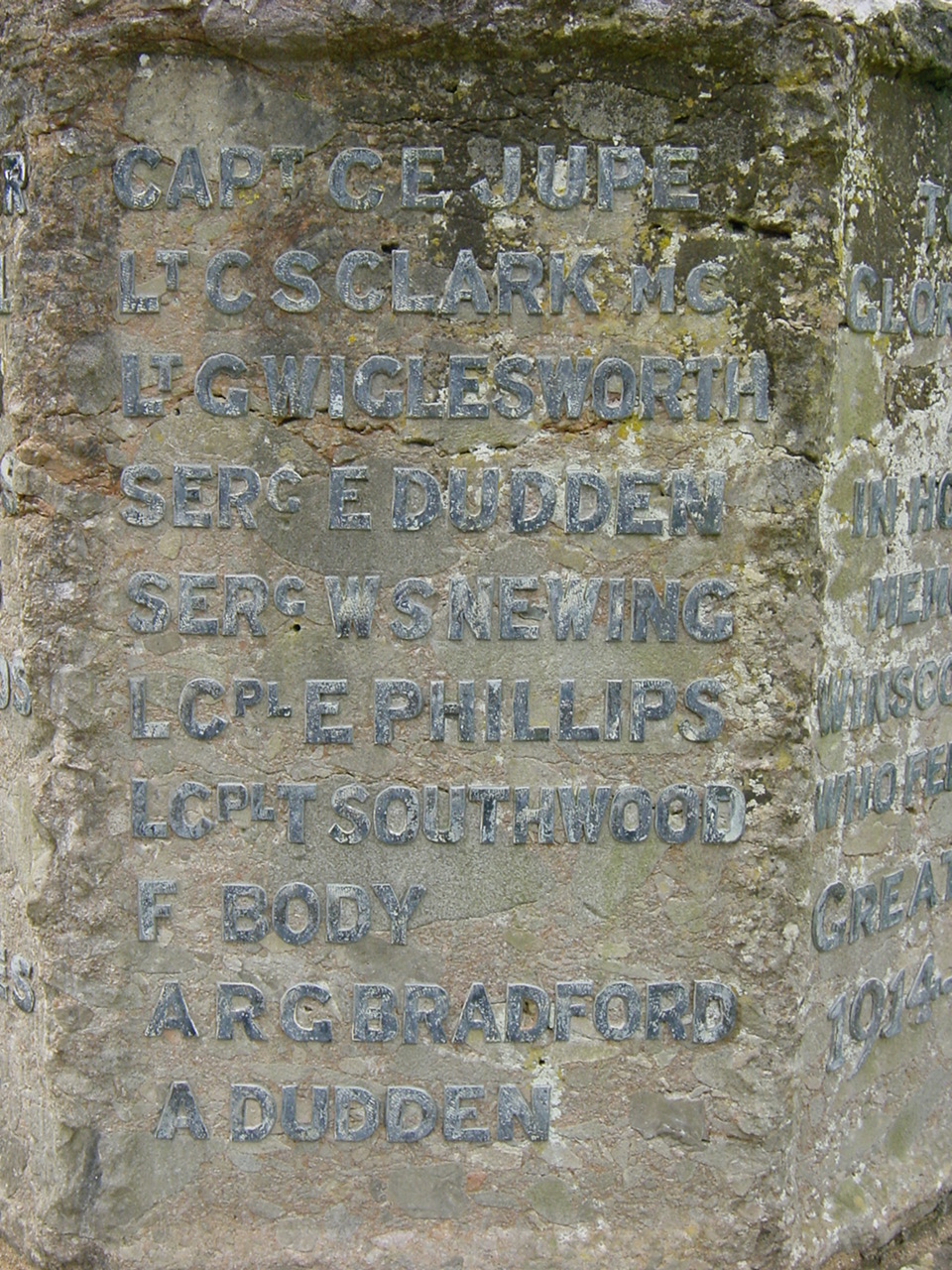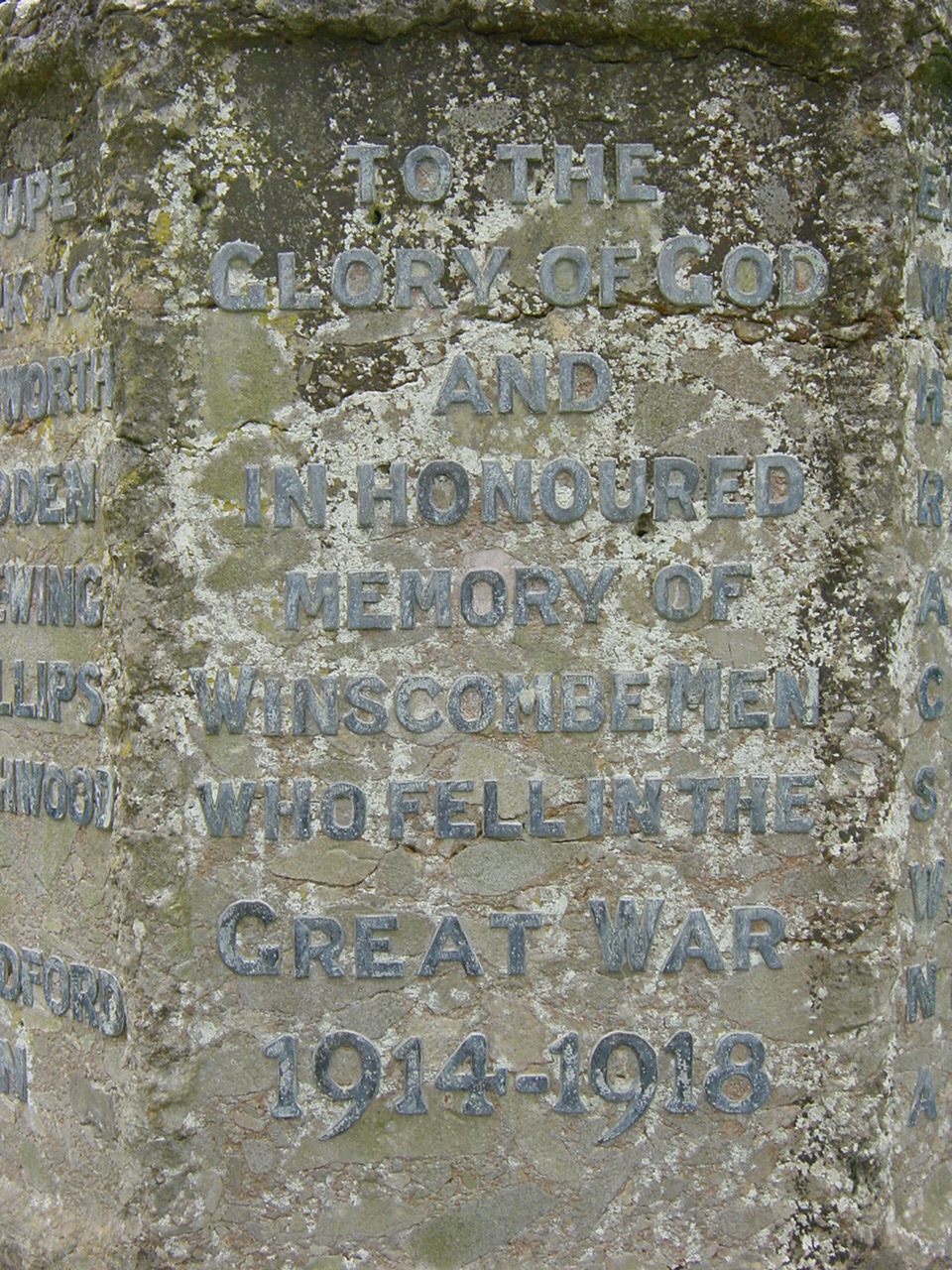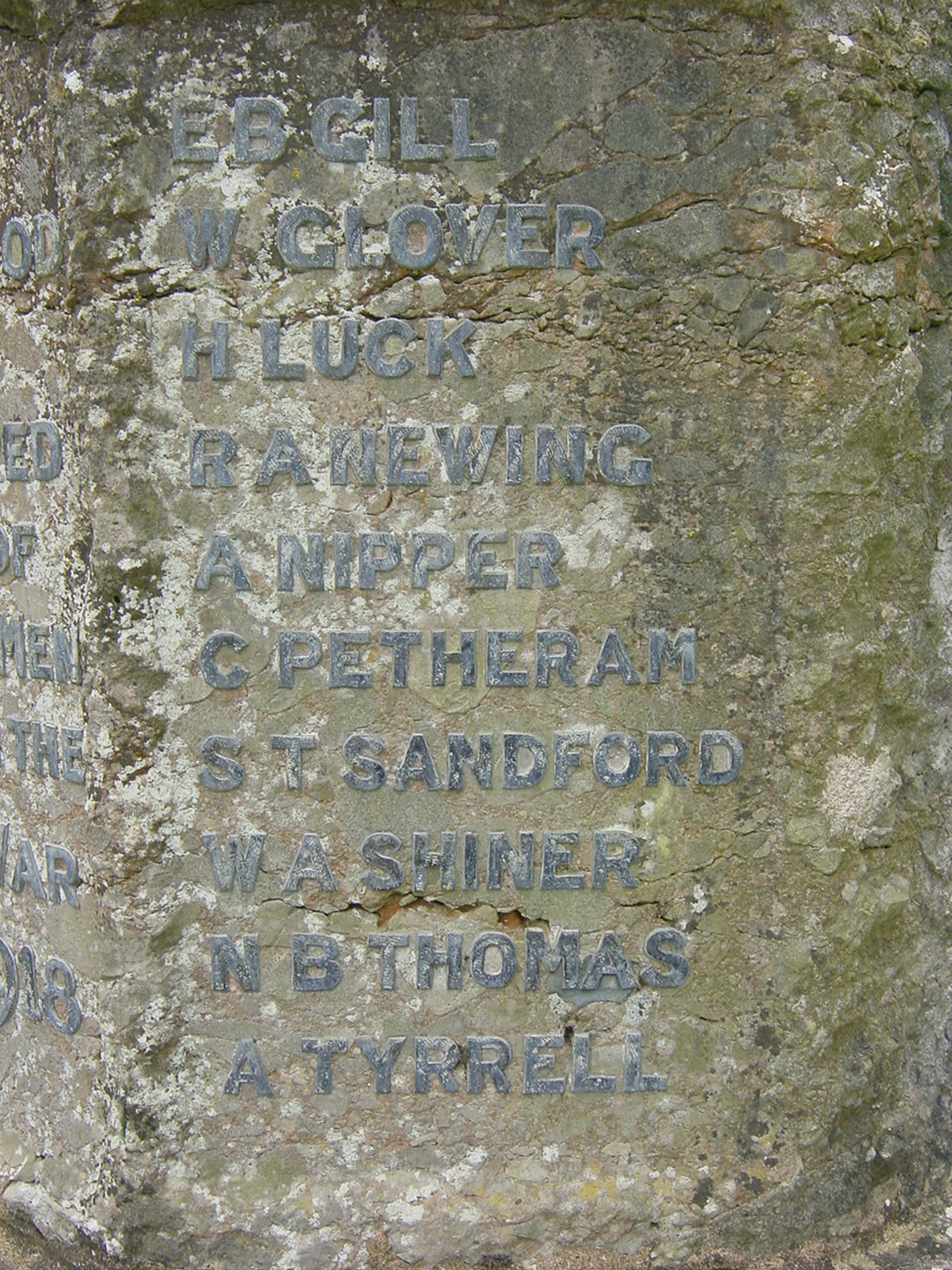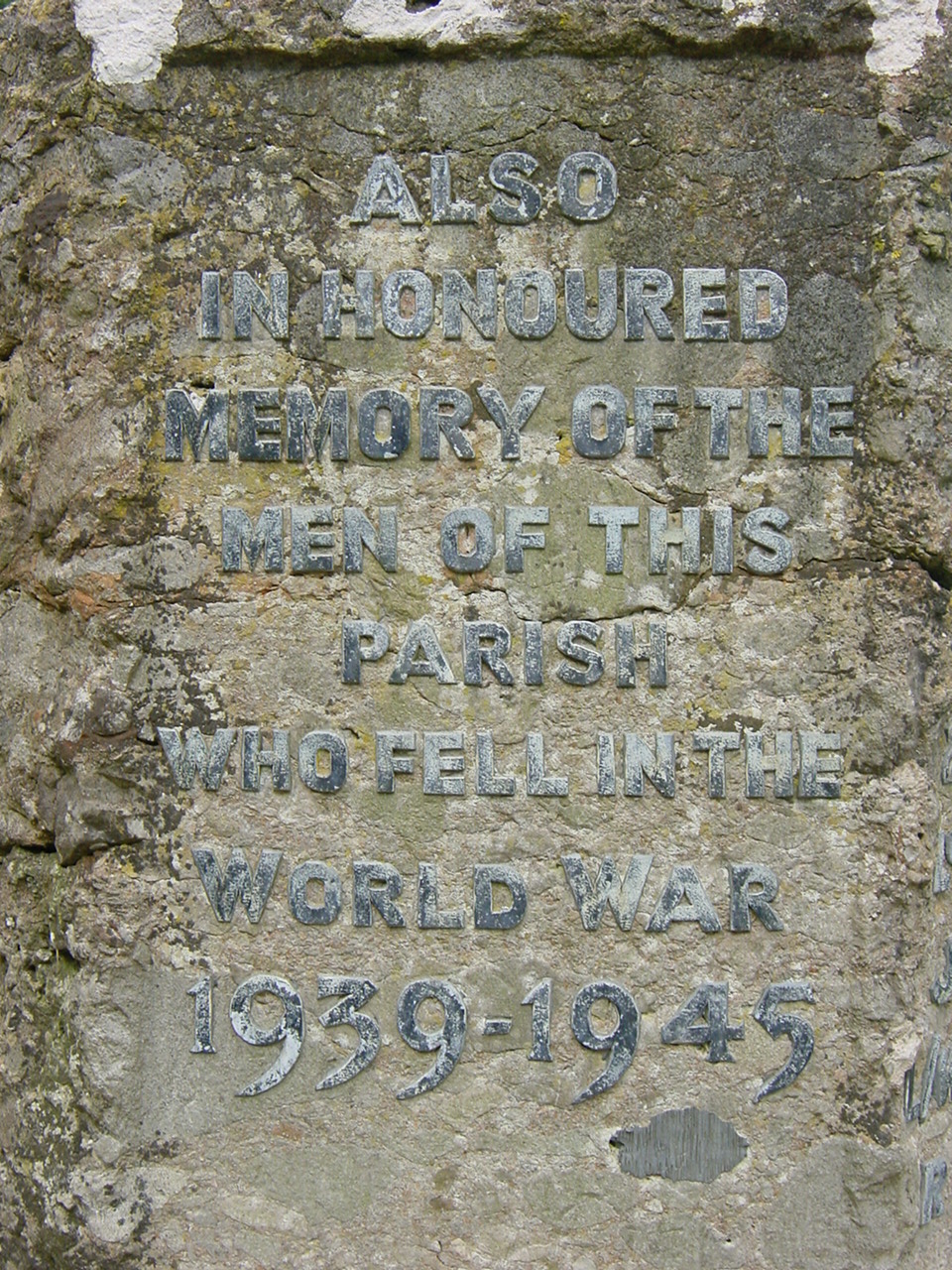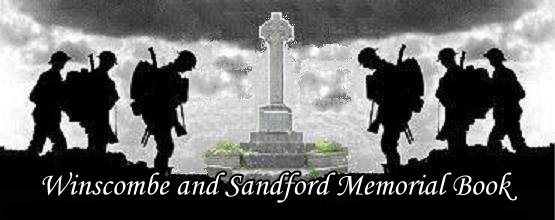
The Memorial Cross is in the Churchyard of St James the Great, just to the west of the church, looking out north across the parish with Wavering Down providing the backdrop. OS Map ref: ST 413 567
One of the earliest actions of the Parochial Church Council [PCC] was to commission the memorial, with the PCC meeting of 14th April 1920 agreeing to Reverend L.H. Ransom’s proposal of the erection of a cross in the churchyard. On the 8th June 1920 they met again to consider designs from three masons: Mr Mills of Wells, Mr Norton of Weston super Mare and Mr Osbourne of Langford.
Mr R.V. Osbourne’s “design No 61” was selected by the PCC and he met with them on the 14th June 1920 during whih the design was discussed and he proposed a number of alterations to the design, recorded as costing an extra £20. The total cost presented to the PCC on July 2nd was for £156-10s-0d
Constructed of Draycott stone [Dolomitic conglomerate] the Shaft and Cross rises from a pedestal which is set on an octagonal base of three steps to a total height of 14ft.
The Cross bears a carved Laurel wreath and a 6ft sword running down the shaft. On the Pedestal, also octagonal, are the panels for the dedication and the names of the fallen. This was originally three panels, to the north/front and either side. A further two panels to the eastern/left hand side were altered to take the dedication and names of the fallen from World War 2 in 1946.
The overall finish is rough punched, except for the Wreath, Sword and the Panels. The Dedication and names are in raised lead of a “Latin block” font. The final wording of the dedication was agreed at the PCC meeting of 11th November 1920.
These are the panels at the base of the Cross. As you climb the steps you are faced with the dedication on the pedestal : “To the glory of God and in honoured memory of Winscombe men who fell in the Great War 1914-1918”.
Under the Pedestal, the inscription of the top step reads “Their name liveth for evermore”
On either side of the dedication are a panel of names, 10 on each side, listed by seniority of rank, in alphabetical order of surname with initials :
